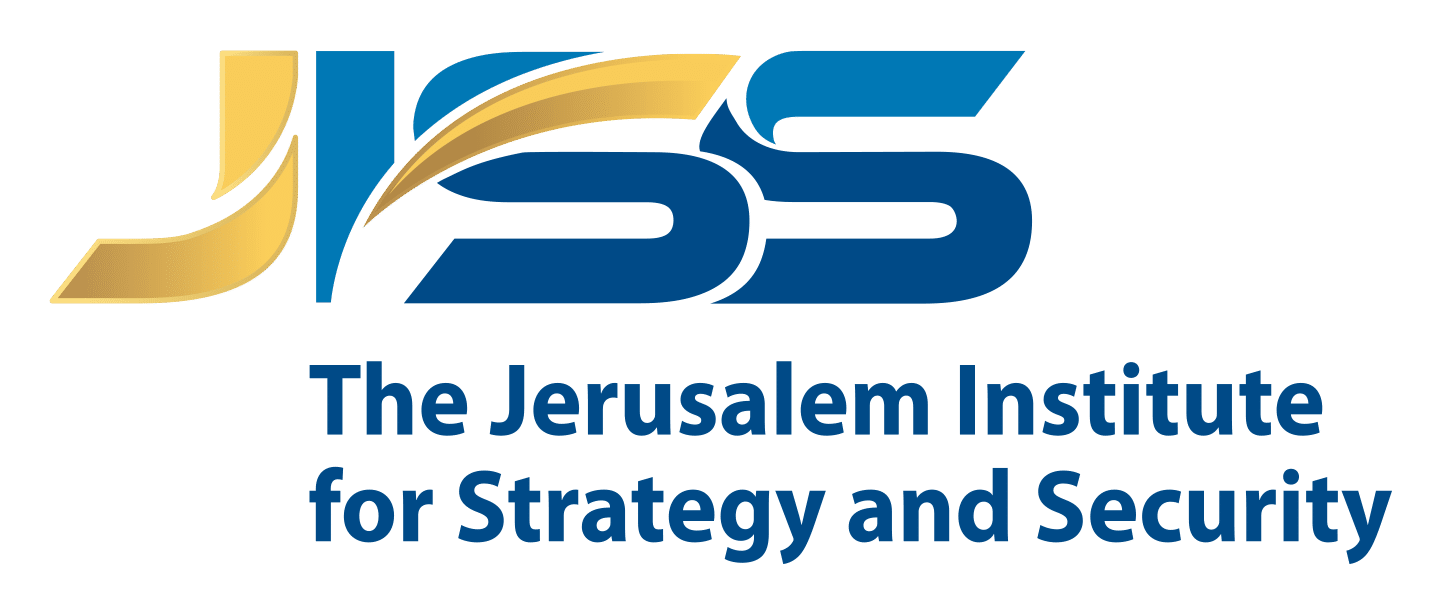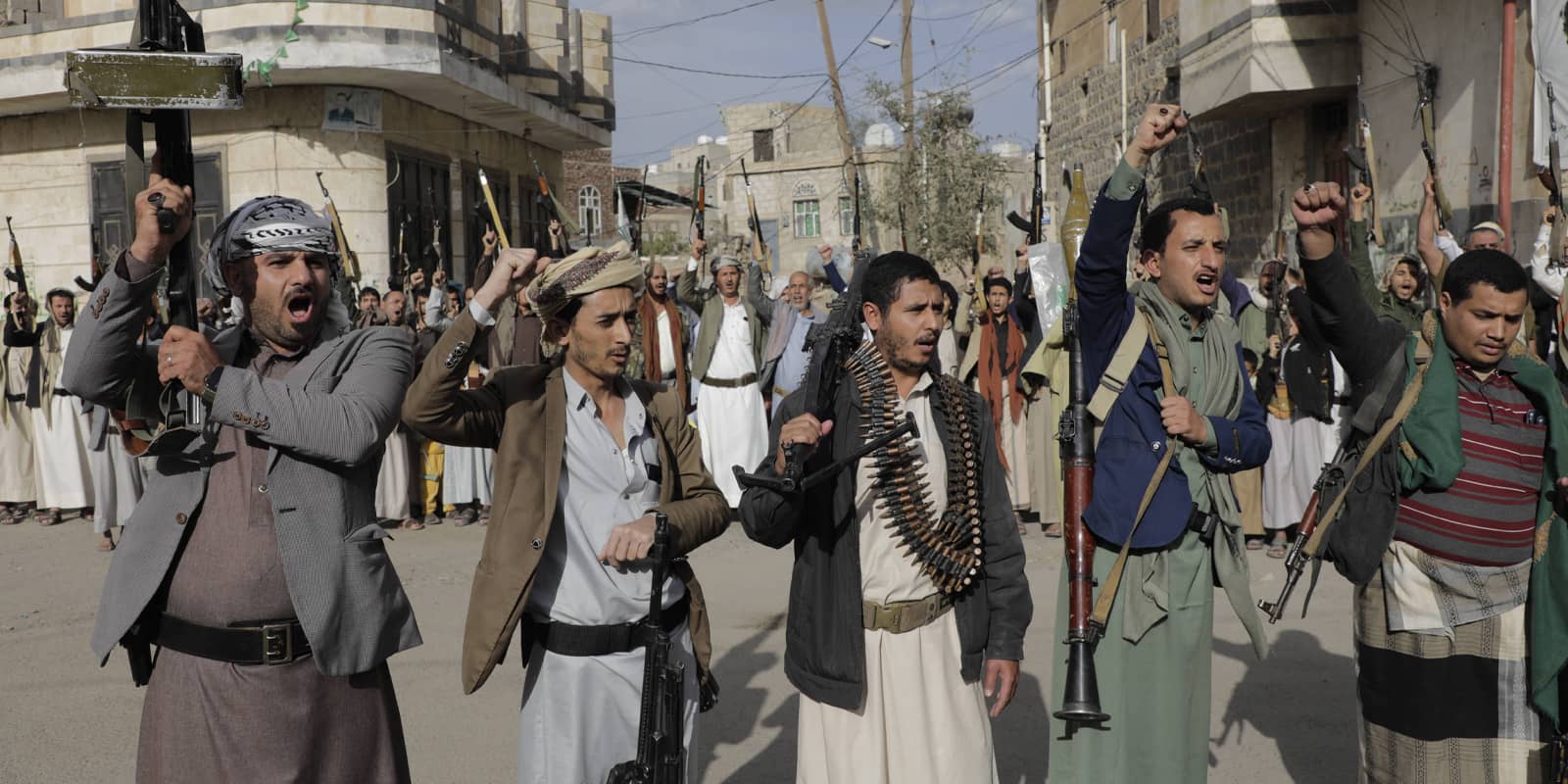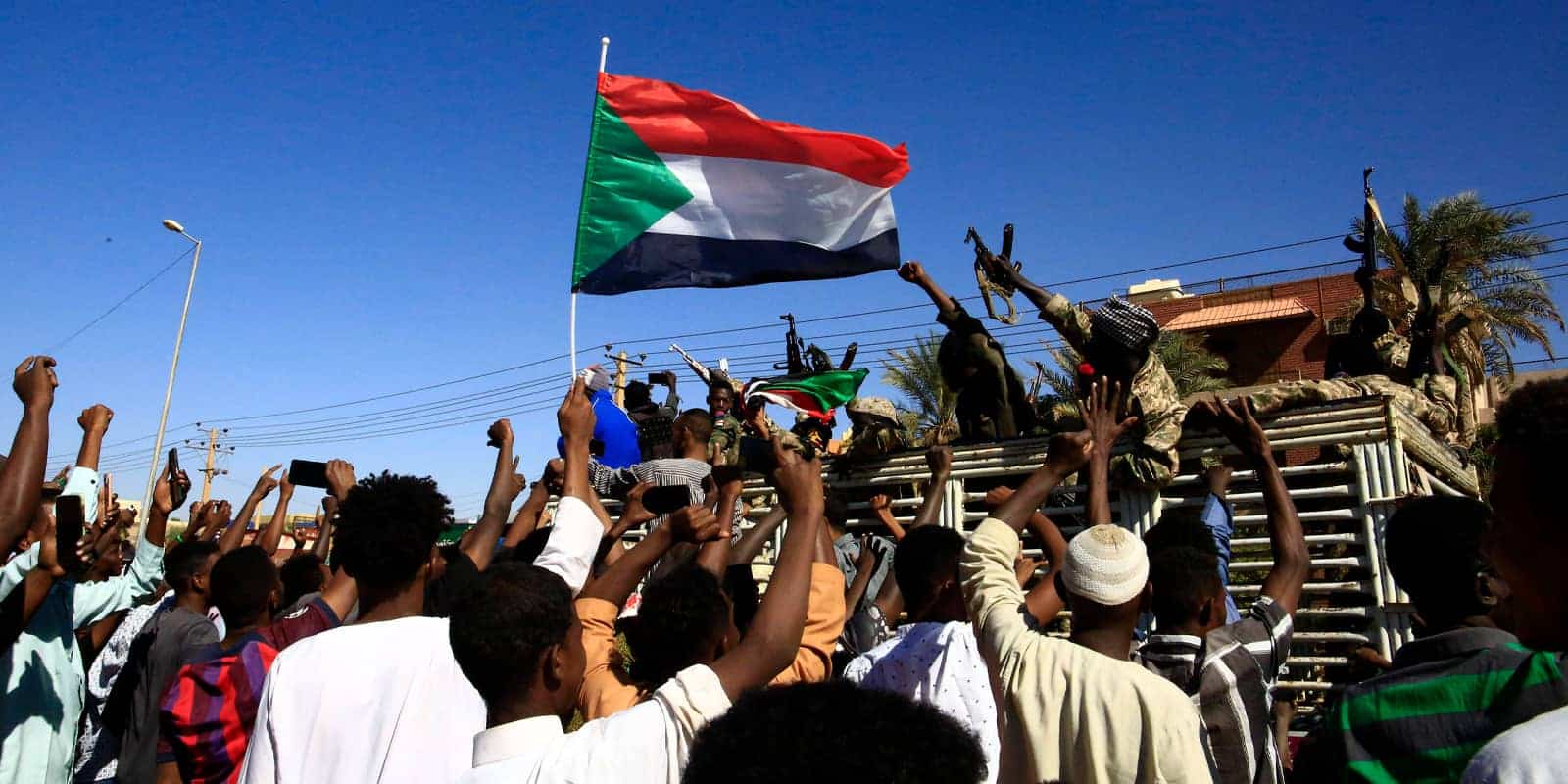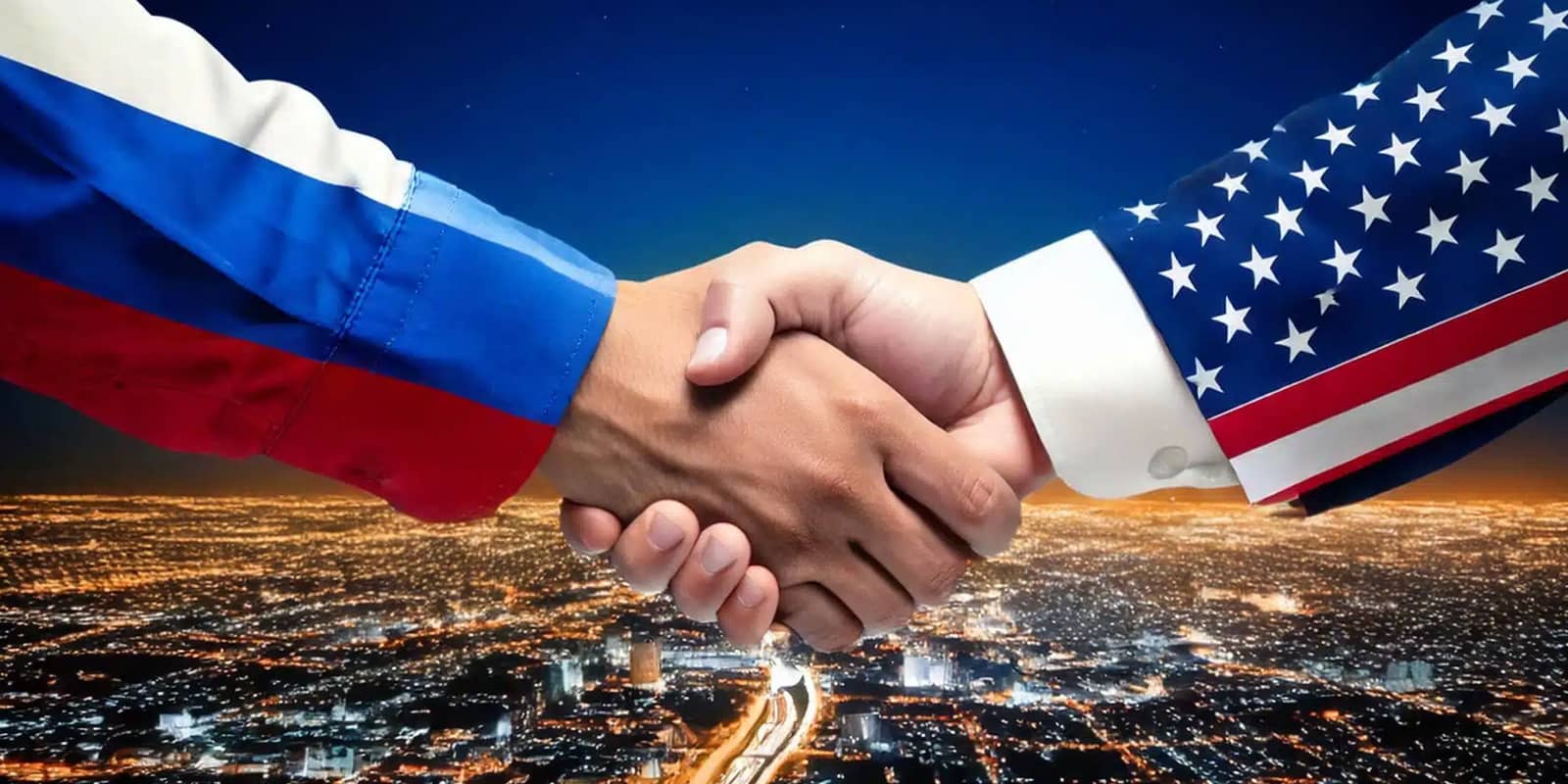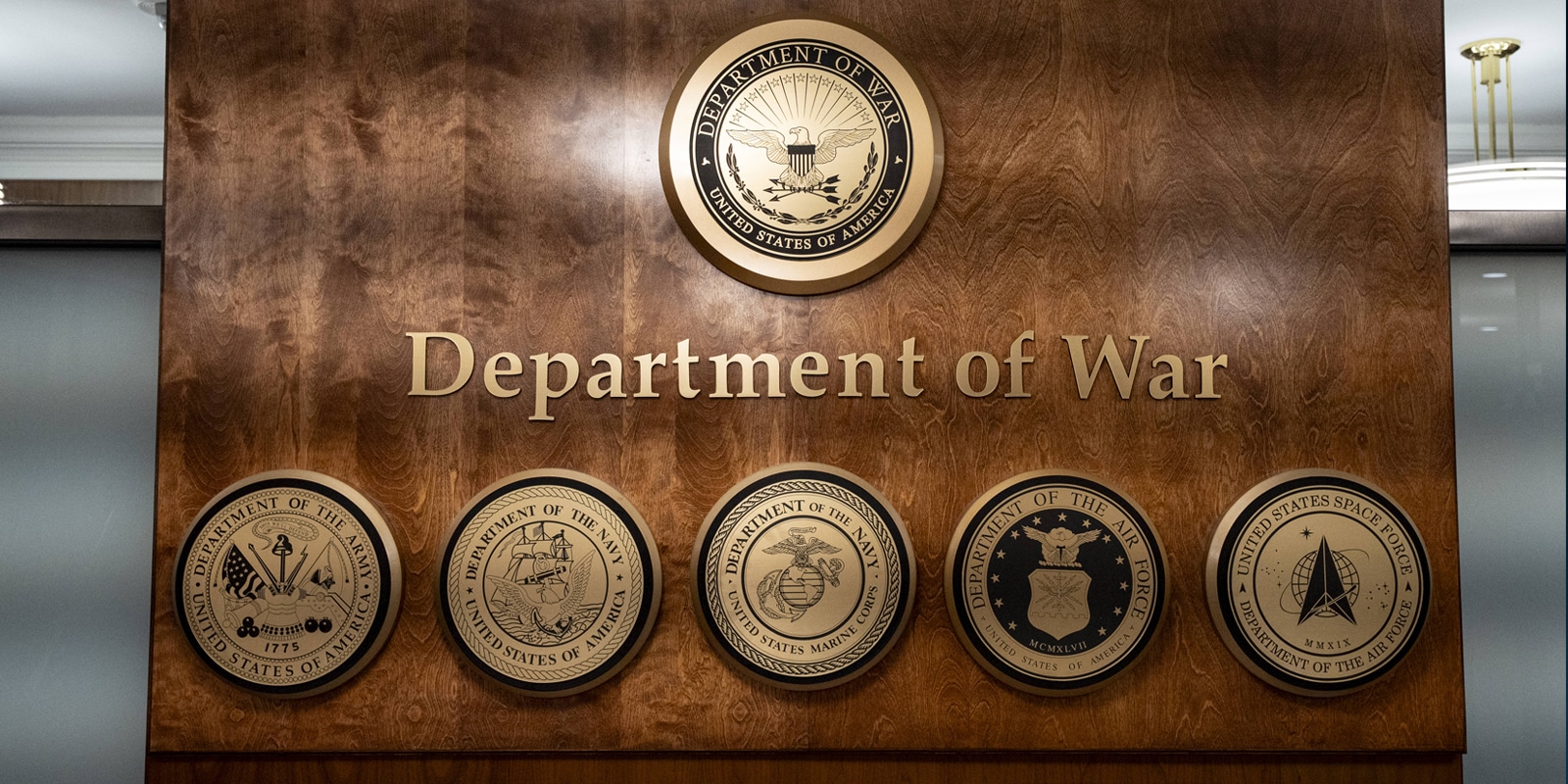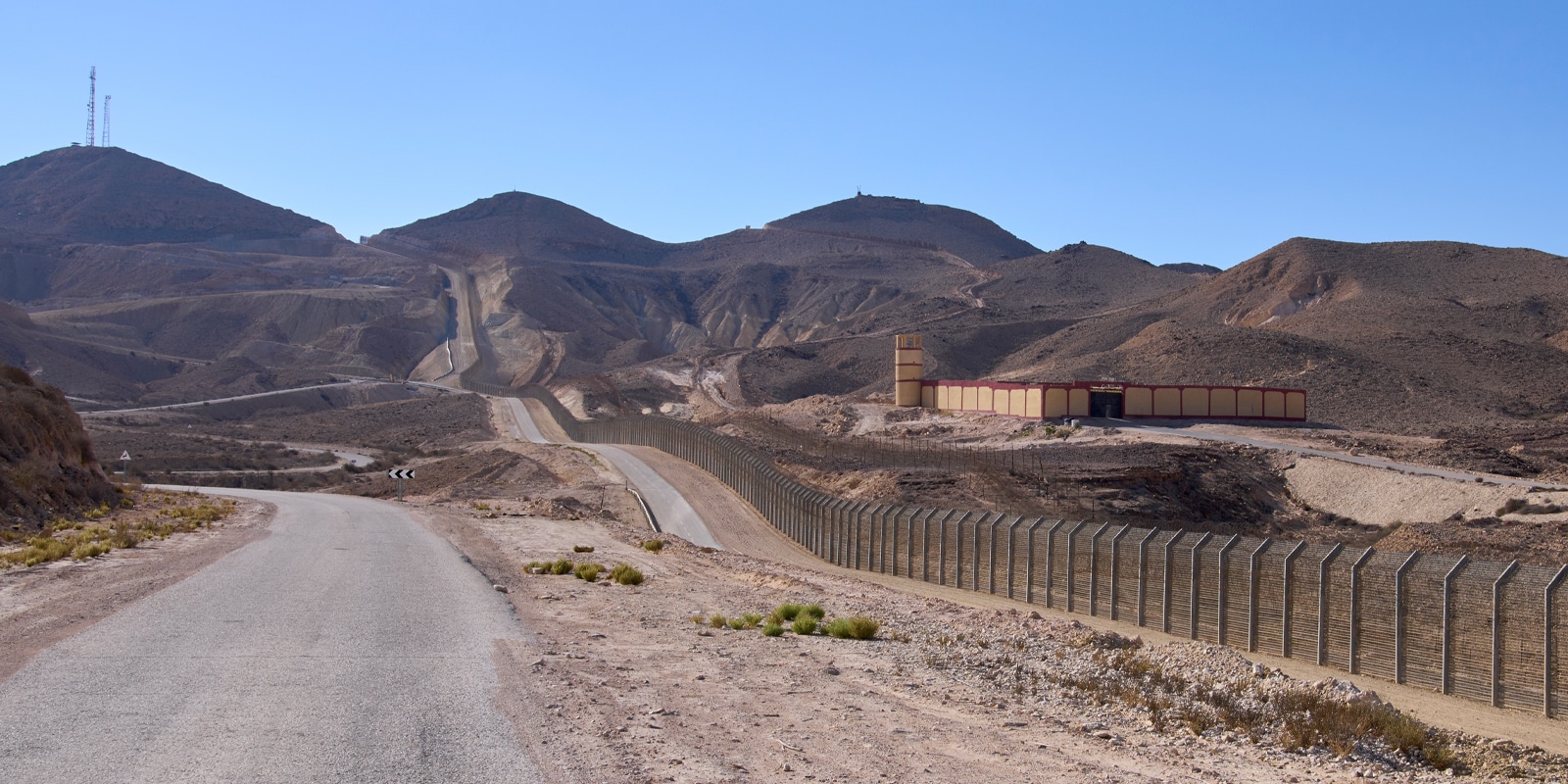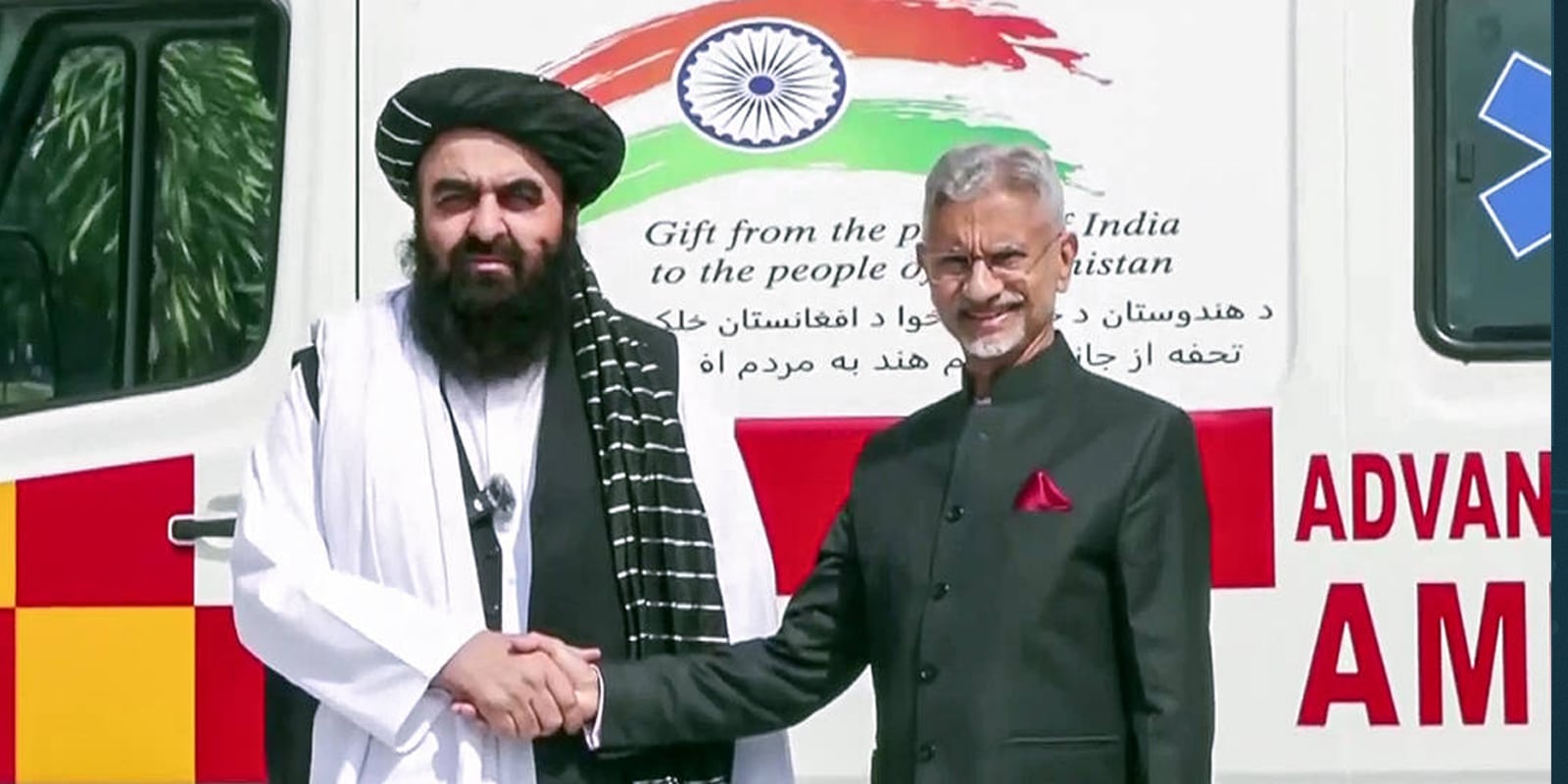The war that Israel named Swords of Iron—which has now lasted for two years since it began on October7, 2023—and its various regional offshoots, along with Operation Rising Lion against Iran in June 2025 and the concluding U.S. strike, Operation Midnight Hammer, are all, to a significant extent, components of a much larger conflict. This wider struggle has unfolded over an entire generation, beginning with the attacks of 9/11 and the American response to the Al Qaeda strike on its soil. This response was aptly defined by Eliot Cohen, among others, World WarIV, inasmuch as the Cold War constituted World War III.
This long war pits the various branches of Islamist totalitarianism—al-Qaeda and ISIL and its variants; the Muslim Brotherhood, which includes Hamas, backed by Qatar and Erdoğan’s Turkey; and the Iranian revolutionary regime and its proxies—against the forces of global and regional stability, including Israel, the United States and the broader Western alliance.
This conflict was at times mistakenly referred to as ” “Global War on Terror (GWOT),” even though terror is the enemy’s tool, not the enemy itself. It has also been defined as “Countering Violent Extremism (CVE)”— without defining what sort of extremism. Yet, all along, this was a war against a specific ideological version, or perversion, of the faith of Islam.
Over the past quarter of century in which this war has played out, the forces of stability have achieved notable successes: the defeat of the Islamists in Algeria; the destruction of al-Qaeda’s leadership; the removal of the Muslim Brotherhood from power in Egypt; the elimination of the Islamic State in Iraq and the Levant (ISIL, known by its Arabic acronym, Daesh) in northern Iraq and Syria; and, more recently, the blows rained upon Iran and its proxies. But there have also been defeats, such as return of Afghanistan to Taliban control, the failure of the campaign to dislodge the Houthis in Yemen, as well as recurrent phases of Western appeasement.
Israel today has a crucial role to play in shaping the next phase of this broader war: First of all, in creating, once the fighting has died down, the conditions for the defeat of Hamas and the establishment of a different governance in Gaza. The emergence of a different political reality in Gaza would in turn have far-reaching influence over the regional balance of power. In Lebanon, Israel can use both sticks and carrots to disarm Hezbollah and change the existing order. It needs to continue the dialog with the U.S. and key European players over the future of the Iranian regime; and to enhance its cooperation with all who belong to the regional “camp of stability”, as well as with Israel’s Eastern Mediterranean partners, so as to contain the dangerous ambitions of Erdoğan’s Turkey.
Who Are We Up Against?
In the broadest sense, the multi=front war Israel has waged for two years did not begin on October 7, 2023, nor is it Israel’s war alone. It may be defined, in a sense, as a continuation of the Palestinian and Arab conflict with the Zionist movement that has been ongoing for more than a century But its most significant component, since the mid-1990s and more intensively since 2000 (which saw the beginning of the campaign of violence mistakenly called “the Second Intifada”), is the bid for dominance by the terror groups identified with totalitarian Islamism—Hamas (the Arabic acronym for the Islamic Resistance Movement) and Palestinian Islamic Jihad (PIJ) — and the backing they receive both from Iran and its proxies and from the supporters of the Muslim Brotherhood, namely Turkey under Recep Tayyip Erdoğan and Qatar under the al-Thani dynasty.
It is important to bear in mind that Israel is not the only target of the Islamist threat in its various manifestations and nuances. Back in the 1990s a murderous civil war raged in Algeria between the Islamists—the Islamic Front of Salvation (FIS by its French acronym) and the smaller and even more militant Armed Islamic Group (GIA)—and the regime, “the power” )al-sulta, in Arabic) dominated by the military. The loss of life was estimated at well over a hundred thousand; ultimately, the Islamist challenge was defeated. The Egyptian regime under Hosni Mubarak faced a wave of Islamist terror attacks at the time, and as it also gained the upper hand, remnants of the radicals from Algeria, Egypt and elsewhere found refuge in “the base”—al-Qaeda— under the wings of the Taliban in Afghanistan.
In response to the 9/11 attack, 24 years ago—much as it did after Pearl Harbor in 1941—the United States joined the fray. As it prepared to invade Afghanistan, the Bush Administration coined the term GWOT—the Global War on Terror— to define the conflict. In an essay at the time (Wall Street Journal, 20 November 2001), Eliot Cohen, one of the leading lights in America in the field of strategy and war, offered the observation that this is an absurdity: “terror” is not a dark force by its own right (like Tolkien’s Sauron, Cohen wrote, or Harry Potter’s Lord Voldemort…), it is a tool, a weapon of sorts, in the hands of a well-defined enemy. Cohen chose to speak of “militant Islam,” but a better term, politically speaking, is probably “Islamist totalitarianism”—a reference to the direct Nazi and even Bolshevik lineage of these ideas since they first germinated nearly a century ago. Due to the conflict’s global scope, Cohen suggested that it should be thought of as World WarIV, insofar as the Cold War with the Soviet was in many ways World War III.[1]
World War I was not “the war against trenches and wire” and World War II was not “the war on tanks and submarines,” and the enemy in the Cold War was not its conventional and nuclear arsenal, but those who threatened to make use of them. The present war is defined not by acts of terror as such, brutal as they may be, but by the enemy’s ideological and political ambitions.
This is not the proper place in which to present the entire history of the Islamist totalitarian movements and the leaders who shaped them, from the 1920s onwards—Hassan al-Banna and later Sayyid Qutb in Egypt, Mawlana Abul A’la al Maududi in India and later Pakistan, Ayatollah Ruhollah Khomeini in Iran—but it is appropriate to offer, in general terms, what they have in common and how they are related to other ideological imperatives which shaped the world order in the last hundred years. Facing a deep crisis in the world of Islam—Western dominance, the ruin of the Ottoman Empire, the abolition of the Caliphate—these movements drew their inspiration not only from Islam’s heritage but also from the new and vigorous models of ideology and politics offered by the totalitarian forces that rose to power in Europe at the time—Communists, Fascists, Nazis—and their messages of destroying parliamentary democracy, establishing one-party rule, adoration of a single leader, and r the pursuit of global power and dominance.
In the immediate period after World War II the Islamists were overshadowed by the nationalist and socialist forces—such as the regime of Gamal Abdel Nasser in Egypt and the Ba’ath in Iraq and Syria—and by the conservative pro-Western monarchies such as Saudi Arabia and Iran. Their leaders were in some cases assassinated (al-Banna) or hanged (Qutb). Yet their influence rose dramatically after Nasser’s humiliating defeat in 1967, and even more so after the dramatic events of 1979—the fall of the Shah in Iran, peace between Israel and Egypt, and the Soviet invasion of Afghanistan (against which the Islamist mujahidin became the main fighting force). The USSR was their foremost foe in the 1980s, but after it collapsed, and later after the American intervention against Saddam in 1991, it was the “Crusaders” (and the Zionists), to use Osama bin Laden’s language, who became the main enemy.
These organizations, backed by Iran played a major role in the wave of violence—in particular the events of early 1996—that followed the Oslo Accords. The same is true for the campaign of terror (erroneously referred to as “the Second Intifada”) that began in the autumn of 2000. In Lebanon, Iran’s Shi’ite proxy, Hezbollah, played a similar role, casting aside state institutions and launching wars in 2006 and 2023. Elsewhere, as already stated, the Algerian civil war raged on, while Egypt faced challenges, and some of the post=Soviet Muslim nations dealt with internal threats.
Islamists who gained combat experience in Afghanistan returned to their homelands to pose a domestic threat after what they portrayed as their victory over the Soviets (they usually forgot to mention the role of the CIA). As already indicated, the regimes in Algeria, Egypt and elsewhere had the upper hand. Given the American support for these campaigns of repression, the United States now became a direct target. Embassies in Nairobi and Dar es Salaam were bombed, the USS Cole guided missile destroyer was hit by a bomb while docked for refueling at the port of Aden in Yemen. However, it was only after 9/11 that the GWOT, or WW IV, became a main vector of U.S. policy.
The Balance So Far – Achievements, Failures and Lessons
World War II ended after six years in the utter defeat and unconditional surrender of Germany and Japan. The Cold War led, after 45 years, to the total collapse of the Soviet bloc and then the disintegration of the Soviet State itself. The interim balance of the war with Islamist totalitarianism is far less impressive—despite some significant gains—largely because the campaign was conducted (if this is the right term) inconsistently and with varying degrees of determination. This lack of coherence and consistency applied to all three dimensions of the struggle[2]—the use of military force and other “hard” measures; the quest to change the social order that currently gives rise to such movements; and a systemic effort to undermine their ideological legitimacy—all of which are required in order to achieve a stable, long term decisive outcome.
The Fate of the Salafi Jihadists
The United States acted in a forceful and determined manner, with the help of allies, to overthrow the Taliban regime in Afghanistan in 2001; tracked down and killed Bin Laden (on Pakistani soil, violating the sovereignty of a nuclear power); eliminated many other Islamist leaders; and played a dominant role— again, in partnership with regional and other partners—–in destroying Daesh after the latter’s initial dramatic achievements in northern Syria and Iraq in 2014. It has also tightened its internal security, and only a few Jihadi attacks have taken place on its soil since 2001. The situation in Europe is less reassuring, mainly because of the Islamists’ grip on some segments of the migrant Muslim populations in several key countries (a grip that is often particularly strong in the second generation, which is facing an identity crisis). Even in Europe, however, despite some horrifying events, preventive security has improved, and the threat from Islamist attackers has been contained—even if there is no guarantee against local massacres committed by determined individuals or small groups. Overall, the variant of Islamist Totalitarianism that can be defined as Salafi Jihadism, led by al-Qaeda and Daesh, is now a shadow of what it was, although it has not yet disappeared altogether.
On the other hand, in Afghanistan, the operational arena in which U.S. warfare against radical Islamism began, it is impossible to avoid the sad conclusion that the Americans and their allies have suffered a resounding defeat, whose consequences continue to echo globally, and may have played a role, directly or indirectly, in convincing Hamas that liberal societies like Israel are not resilient in the face of determined violence. Attrition and prolonged erosion of the military will to fight; the lack of ability, on the part of the U,S,-sponsored government, to establish a firm ideological alternative, despite the initial sympathy shown to the American and allied “liberators” back in November 2001; and primarily, endemic corruption and the lack of solutions to social and economic problems, all enabled the Taliban to regain its strength. Thus, the United States—first under President Trump in an initial agreement that recognized the Taliban’s legitimacy, and then under President Biden in a hasty and undignified retreat of remaining American forces in the country—conceded, in practice, that the Afghan project, which cost so much in blood and treasure, ended in abject failure. This is the case even if the Taliban are now careful not to offer their hospitality to terror groups with a global agenda.
The Iranian Front
Moreover, on another key issue with profound implications for the overall fate of this global war—namely the ambition of Iran’s revolutionary regime to establish itself as the hegemon in the region, relying on its array of proxies and on the military nuclear project—American actions waxed and waned, and the results reflected this lack of consistency. When the U.S. intervened in Iraq in 2003, neo-conservatives in the Bush Administration may have been hoping that a pro-American, Shi’ite-majority government in Baghdad, backed by the authority of Grand Ayatollah Ali Sistani, would undermine the legitimacy and stability of the regime in Tehran. The opposite happened: the troubled nature of the campaign in Iraq, and the collapse of internal security there after the fall of Saddam, led to growing Iranian involvement in Iraqi affairs and bolstered Iran’s strategic position.
In 2006, Israel’s war on Hezbollah was brought to an early end before it could produce a strategic result against Iran’s proxy system (even if it did enhance deterrence). In 2008, Hezbollah tightened its political grip on Lebanon, although by 2019-2020 there were growing protests against it. As to the nuclear portfolio, the sanctions on Iran, particularly UNSCR 1929 (June 2010) led to the 2015 JCPoA nuclear accords, which did delay Iran’s march to the bomb, but left it with a path toward a nuclear weapon down the road; the U.S. withdrew from the agreement in 2018. When it came to Iran’s regional proxies, Washington did not pose any demands and even used Iran and its “Popular Mobilization” militias in Iraq to help defeat Daesh. The U.S. air strike that killed the commander of the IRGC Quds Force, Qasem Soleimani, in Iraq on January 3, 2020, was not followed by other effective actions.
Meanwhile, the Houthis in Yemen—Shi’ites associated with Iran, despite some theological differences as to aspects of the faith — took over Sanaa, and despite its ambitious name, the Saudi led response—Operation Decisive Storm —was neither decisive nor a storm and ended soon after it began in March 2015. Meager American support —including the resounding lack of response to the Houthi attack on Saudi crude oil facilities at Abqaiq, and later the Biden Administration de-listing of the Houthis as a terror organization—played a major role in limiting the effectiveness of the anti-Houthi alliance.
When the Houthis joined the war against Israel in 2023, effectively closing down the Eilat Port, then U.S. Secretary of Defense Lloyd Austin initiated Operation Prosperity Guardian, with the backing of several allies, to secure freedom of navigation, but the American-led operation had a limited impact. A more intensive campaign launched by the Trump administration in March 2025 was terminated in early May without producing significant results, despite the president’s claim that the Houthis had capitulated. The Houthis agreed to stop attacking American shipping, but went back on their promise in September 2025, threatening to attack ships belonging to U.S. oil companies. Their attacks on shipping allegedly headed to Israel, as well as missile and drone attacks on Israel, continued apace throughout.
It was Israel, not the U.S., which dealt the heaviest blows to Iran’s proxy system, badly mauling its most important component—Hezbollah in Lebanon — although Biden’s “Don’t” in October 2023 following the Hamas assault on Israel may have played a role in restraining the group’s involvement in the war that followed. The havoc wreaked upon Hezbollah indirectly led to the dramatic collapse of the Syrian regime— another brick in Iran’s wall —in December 2024. Earlier, in April and October 2024, America and other allies, both European and regional, played a role in foiling or rather minimizing the impact of Iran’s missile and drone attacks on Israel. Finally, as Israel’s Operation Rising Lion reached its culmination point, Trump ordered an attack –Operation Midnight Hammer — on key Iranian nuclear facilities.
Following Iran’s failure (to block Germany, France and Britain’s move to snapback of sanctions at the United Nations Security Council in September 2025, Tehran faces growing economic hardship. The United States and its allies meanwhile once again face a basic question: is it right, and possible, to translate the impact of military blows and “maximum pressure” into a broader initiative—as part of the global war—aimed at regime change (a term which carries unhappy associations for many Americans, given the results of its adventures in Iraq and Afghanistan)? More than any event since 1979, such a transformative outcome— one which could emerge suddenly, in a non-linear fashion, from within the ranks of an increasingly frustrated population—would constitute a victory at the level of grand strategy over Islamist totalitarianism in its various manifestations. But this to come about, it is necessary to bring to bear a well-thought-out and coordinated combination of credible military threat, economic pressure, a coherent ideological campaign, and the emergence of a governmental and social alternative to the existing regime.
The Muslim Brotherhood Front
While the Salafi Jihadists were largely cut down, and Iran and its proxies suffered severe setbacks, the balance vis-à-vis the Muslim brotherhood and their backers —Erdoğan in Turkey and the ruling dynasty in Qatar—is less decisive.
It was neither the United States nor Israel that struck the heaviest blow to the power (and prestige) of the Muslim Brotherhood: their removal from power in Egypt on July 3, 2013, was largely the work of the local military and legal establishment, with help from the anti-Muslim Brotherhood players in the Gulf—Saudi Arabia and the Emirates—who lent their support to the millions who took to the streets three days earlier to call for Mohamed Mursi’s ouster (the Qataris, on the other hand, backed Mursi). This was followed in August by the brutal destruction of protest camp set up by Muslim Brotherhood supporters at in Rabaa al-Adawiya Square in Cairo, and the repressive measures taken since then. In the U.S. (under Obama) and in Europe there were expressions of dismay (but Greece and Cyprus, like Israel, welcomed the overthrow of Mursi’s regime, which was ideologically close to Erdoğan’s AKP in Turkey).
In terms of the use of force, the present Egyptian regime does not shy away from drastic measures to suppress the Islamists in their various branches. In this respect Israel has been able to assist, both diplomatically — by helping to allay American and European criticism —and militarily, specifically in the prolonged and grinding campaign to destroy ISIS Sinai Province. Sisi also lent support to Khalifa Haftar’s Libyan National Army (LNA) in its war with the MB-dominated, Turkish-backed government in Tripoli. The Egyptian intervention and threat of invasion ultimately produced a fragile truce between the warring camps.
At the level of ideological warfare, Sisi initiated an important bid to de-legitimize Islamism and promote an alternative vision of Islam. In a speech at al-Azhar University in Cairo on January 1, 2015, he called for the abandonment of extremist interpretations and a return to a more enlightened approach—historically known as tanwir — to Islam as both a religion and a culture. This initiative, however, has so far borne limited fruit. To a large extent, Sisi’s ability to gain ground in this effort – as well as to promote a renewed sense of Egyptian national identity rooted in the ancient legacy of the Pharaonic era— depends on his success in delivering economic stability, social welfare, and the narrowing of social gaps, lifting a broad sector of the population out of persistent poverty.
Despite extensive investment by the Emiratis and Saudis, and continued American aid and support—demonstrated in Sharm el-Sheikh, where President Trump was far more supportive of Sisi than Obama and Biden ever were—Egypt continues to face serious social and economic difficulties, in part due to the steady growth of its population. Its capacity to serve as a model of a successful tanwiri interpretation of Islam therefore remains limited. On the other hand, the Muslim Brotherhood as a movement is at a low point, certainly in terms of its ability to threaten the regime’s stability. The true extent of its base of support is difficult to assess. In any case, it has been unable to do much to support Hamas, although the latter defines itself as a Palestinian branch of the Brotherhood.
Two key regional players —Turkey, led by Erdoğan and the AKP, and Qatar, with its nearly limitless financial resources —however, fully support the Muslim Brotherhood across the region, and their influence (strategically, economically, and in the realm of ideas) has been growing — not least because of their standing with the present U.S. administration. Neither President Trump nor his key operatives in the region —among them Ambassador Tom Barrack in Ankara and special envoy Steve Witkoff —appear to be troubled by Qatar’s or Turkey’s stance toward the Brotherhood and its ideology.
While the Qataris and Turks assisted in securing the hostage deal and signed on to Trump’s 20-point plan, their engagement seems likely to be aimed at hampering any bid to disarm Hamas. Turkey’s position on Gaza’s future of Gaza is ultimately similar to that of Hamas itself. Meanwhile, Ankara’s growing involvement—military, administrative, economic, and ideological—in Syria following the fall of the Assad regime has become a dominant aspect of the balance of power there. Erdoğan’s regional and even global ambitions, interwoven with an Islamist world view and glorification of Turkey’s Ottoman past, may well become the foremost challenge in the context of “World War IV”.
Israel’s Role in the War
The ceasefire and hostage release may alleviate, at least partially, Israel’s international isolation. Moreover, in terms of the regional balance, Israel remains a key component in the war against Islamist totalitarianism on its multiple fronts:
- Hamas. There will be crucial role for the actions Israel will take, in conjunction with U.S. policy and that of the like-minded regional players such as the Saudis and Emiratis— who share Israel’s and Egypt’s concern about the Turkish and Qatari role—to create an alternative political reality in Gaza. This outcome will determine whether October 7 becomes an inspiration for violent Islamist activism, or rather, with Hamas driven out of power and disarmed, and Gazans increasingly aware that it was the Islamists who brought them to grief, the lessons of the war will have a positive effect across the region. This will also require constant vigilance against efforts by Hamas to intensify its activities in the West Bank and to penetrate the ranks of Israel’s Arab citizens.
- Syria. Thepedigree of its current president is a source of concern. Israel needs to secure not only formal agreements but also a prolonged transition period in which it retains military freedom of action. The hope is that Ahmed al-Sharaa, despite his background, will adjust to Syria’s role as part of the regional camp of stability, with the security, diplomatic and economic benefits that such an alignment would generate. In this respect, cooperation and coordination with Saudi Arabia and the Emirates —both able and willing to offer a counterweight to Erdoğan’s ambitions, with its attendant ideological imperatives, and Qatar’s financial leverage —will be essential.
- Lebanon. Israel’s levers, including persistent military strikes and the positions it still holds inside Lebanon, need to be translated into growing pressure on Hezbollah, in support of the Lebanese government’s demand that it should be disarmed. At the same time, Israel may be able to offer Lebanon security guarantees against possible intervention by Syrian jihadists, thereby removing a key argument Hezbollah uses to justify holding on to its arms. Economic “carrots” should also form part of the strategic toolbox, given Lebanon’s distress. In this arena, too, it is vital to act in coordination with other members of the camp of stability.
- Egypt and Jordan. Israel needs to build upon the momentum of Sharm el-Sheikh to restore the centrality of its veteran peace partners and curb the bid by Turkey and Qatar to dominate events. It should also conduct itself with the necessary caution on any issue that may increase tensions, weaken President Sisi or the Jordanian monarchy, and play into the hands of the Islamist opposition in both countries.
- Turkey and Qatar. Bearing in mind that the military option of striking Hamas targets in both countries has been flatly ruled out, Israel’s main levers are in the realm of diplomacy and the battle of ideas. With the help of those who share Israel’s concerns—both in Europe (Greece and Cyprus) and in the United States (including the influential Greek lobby)—it is both necessary and possible to exert a restraining effect against Erdoğan’s dangerous rhetoric and neo-Ottoman ambitions. Moreover, even if the administration may not like it, Qatar’s double game—as a focal point of support for Islamist totalitarianism —should be exposed and denounced.
- Iran and its remaining proxies in Yemen and among the Iraqi militias: a key component in the next phase of developments is the application of the snapback mechanism of sanctions and its implications for regime stability. Israel’s stance on the nuclear issue and on Iran’s proxies — even amid the diplomatic “tsunami” it currently faces over the Palestinian question— still carries weight; and so does the persistence of what even the Iranians themselves see as a credible military threat (CMT).
Thus, alongside the use of force — which has become the most significant part of Israel’s toolkit over the last two years — it is equally vital to attend to statecraft and diplomacy and remind our interlocutors in the region and in the West of Israel’s role in World War IV. It is also important to help the camp of stability articulate alternative visions to those of the Islamists —above all, by creating a new reality in Gaza that weakens the Islamists narrative and advances their defeat.
[1] Some would call it WW Six, insofar as the Seven-Year War (1756-1763) and the Napoleonic Wars already had a global scope.
[2] See Eran Lerman, “Strong Security, Social Change, and Ideological Warfare: A Three-pronged Strategy for Defeating Islamist Totalitarianism”, JISS 26 October 2018
JISS Policy Papers are published through the generosity of the Greg Rosshandler Family.
